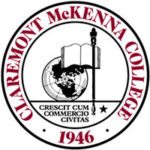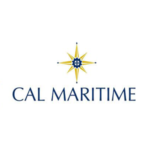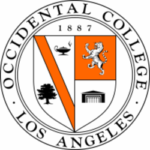
10 Best Deals on Small Colleges in California

The Golden State of California is rich with culture. Unique and beautiful landscapes abound across the state. Of course, California is also home to some of the most exciting educational opportunities in the world.
California has several of the best small colleges and universities in the United States. Most of them are private colleges and universities, so they cost the same whether you’re from California or not. There’s only one public college in this ranking of the best small colleges in California. But it hangs in there with the best colleges in the state. At the best small colleges in California you can expect sunny weather and close proximity to beaches and national and state parks. And the best part is, you won’t have to sacrifice quality for an incredible location. You’ll find several different kinds of colleges and universities to choose from in our ranking. You have a top 10 university and several top national liberal arts colleges in California. You will also find a Christian liberal arts school, and one of the only maritime academies in the United States. No matter what you’re looking for in a small college, you’ll likely find it in our ranking. So have a look, and see if any of these schools seem like a great fit!
#1. Harvey Mudd College

Website
Score: 100
Harvey Mudd College is one of the best small liberal arts colleges in California. Harvey Mudd is a pioneer of the STEM-focused liberal arts program. Mudd’s graduates enjoy the second-highest 20-year net return on investment in the country. ROI here is only slightly less than that of graduates from MIT. Harvey Mudd is one of the best examples of a school that grants you all the benefits of a small college without requiring you to sacrifice anything. The acceptance rate of just over 13% may seem low, but that’s roughly twice the acceptance rate of schools like Cal Tech and MIT. Mudd offers bachelor’s degrees and master’s degrees.
- U.S. News Ranking: National Liberal Arts #25
- 20yr Net Return on Investment: $1,276,000
- Out-of-State Tuition and Fees: $56,660
- Graduation/Transfer Rate: 98%
#2. California Institute of Technology

Website
Score: 95.62
California Institute of Technology is the most selective small college in our ranking. Most students who attend Cal Tech do so with the goal of earning a bachelor’s degree in a STEM field. It accepts just 6.4% of applicants. This elite school is on the same level as schools like MIT and Stanford. Its STEM programs are among the best in the nation. The student body population is under 1,000, a quarter that of MIT and one seventh that of Stanford. The student-to-faculty ratio at Cal Tech is the lowest you will find in any school in the United States. Cal Tech has just three students for every professor.
- U.S. News Ranking: National Universities #9
- 20yr Net Return on Investment: $1,066,000
- Out-of-State Tuition and Fees: $56,862
- Graduation/Transfer Rate: 98%
#3. Claremont McKenna College

Website
Score: 88.11
Claremont McKenna College is a top-ranked liberal arts college in the United States. The school has an undergraduate student body population of 1,343. The student to faculty ratio is eight-to-one. Claremont McKenna admits 10% of applicants. Claremont blends the cozy feeling of a small college in which to earn a bachelor’s degree with the advantages of a mid-sized college. Students can network and work with students from other liberal arts colleges in California, especially the Los Angeles area. These colleges and universities include Harvey Mudd College, Pomona College, Scripps College, and Pitzer College–all schools which feature in this ranking.
- U.S. News Ranking: National Liberal Arts #6
- 20yr Net Return on Investment: $873,000
- Out-of-State Tuition and Fees: $56,475
- Graduation/Transfer Rate: 91%
#4. Pomona College

Website
Score: 82.20
Pomona College has an undergraduate student body population of 1,447. The student to faculty ratio is seven to one. It’s a top-ranked national liberal arts college. It’s also one of the most selective colleges in California. Pomona admits just seven percent of applicants. The college was established in 1887 and features 48 bachelor’s degrees in the areas of the arts, humanities, and social and natural sciences. Though the student body population is small, it is diverse. Pomona houses students from 61 nations, 49 U.S. states, Washington D.C., Guam, and Puerto Rico. One of the most diverse colleges in California. A great environment in which to earn your bachelor’s degree.
- U.S. News Ranking: National Liberal Arts #4
- 20yr Net Return on Investment: $617,000
- Out-of-State Tuition and Fees: $54,774
- Graduation/Transfer Rate: 93%
#5. CSU Maritime Academy

Website
Score: 81.45
California Maritime Academy is not strictly a military academy. 94% of graduates go into the private sector. It does, however, have a military academy vibe. Students wear uniforms. And historically the school has had close ties with the military and shares some of the same values. About eight percent of students graduate as commissioned officers in the military. 94% of graduates from Cal Maritime land a job within three months of graduation. This is one of the best rates of employment among all colleges and universities in the United States. The school offers many bachelor’s and master’s degrees in a variety of subjects related to seafaring. CSU Maritime is comparable in quality to the other best small colleges in California but is a fraction of the cost. The incredibly low price and the acceptance rate of 76% help it stand out as both high-quality and accessible. Definitely one of the best small colleges in California. One of the best places in the country to earn a maritime bachelor’s degree.
- U.S. News Ranking: Regional #2
- 20yr Net Return on Investment: $926,000
- Out-of-State Tuition and Fees: $7,160
- Graduation/Transfer Rate: 71%
#6. Occidental College

Website
Score: 73.69
The average class size at Occidental college is just 17 students. This is remarkable even for a school with a nine-to-one student-to-faculty ratio. At 1,985 students, Occidental College is one of the largest schools featured in our ranking. So if you want a small college, but not too small, this is a great choice! Occidental College is a top liberal arts college. However, unlike many top liberal arts colleges in California, it accepts around 37% of applicants. This means it is much more accessible than average. The InternLA program provides students with the opportunity to engage in paid summer internships. These internships are with companies and organizations in the Los Angeles area. It’s a great place to earn a bachelor’s degree.
- U.S. News Ranking: National Liberal Arts #40
- 20yr Net Return on Investment: $392,000
- Out-of-State Tuition and Fees: $56,576
- Graduation/Transfer Rate: 97%
#7. Scripps College

Website
Score: 69.40
Scripps College is a top liberal arts college in the LA area. Scripps is also one of the more accessible liberal arts colleges in California with a 32% acceptance rate. The student body is just under 1,000, and the student-to-faculty ratio is 11 to one. Scripps was founded as a women’s college. It remains one of the few women’s colleges in California not to become coeducational to this day. The school is 100% women, 41% students of color, and five percent international students. Scripps has a transgender-inclusive admissions policy. This means transgender women can feel free to apply without worry. Government documentation is not required to verify sex or gender identity. Students at Scripps can count on an education with an eye for social justice that extends into the college policies.
- U.S. News Ranking: National Liberal Arts #28
- 20yr Net Return on Investment: $291,000
- Out-of-State Tuition and Fees: $57,188
- Graduation/Transfer Rate: 90%
#8. Dominican University of California

Website
Score: 66.00
Dominican University of California was founded in 1890. The school offers over 60 bachelor’s degrees and concentrations. Dominican has a 10-to-one student-to-faculty ratio. The average class size is just 16 students. Students who want to study in other countries may be interested in the 60+ study abroad programs. Its business programs are AACSB-accredited. Its location in the San Francisco Bay Area is perfect for students who want to take full advantage of its proximity to Silicon Valley. You can also pursue a master’s degree here.
- U.S. News Ranking: Regional #24
- 20yr Net Return on Investment: $386,000
- Out-of-State Tuition and Fees: $47,910
- Graduation/Transfer Rate: 95%
#9. Pitzer College

Website
Score: 65.62
Pitzer College is one of the many liberal arts colleges in Claremont and southern California. The school has a 10-to-one student-to-faculty ratio and around 1,000 undergraduate students. The school admits 14% of applicants. It is a member of The Claremont Colleges. This is an affiliation shared by the numerous liberal arts colleges in California, particularly Los Angeles. Claremont provides students with the small liberal arts college environment, without sacrificing the advantages of a larger school.
- U.S. News Ranking: National Liberal Arts #36
- 20yr Net Return on Investment: $237,000
- Out-of-State Tuition and Fees: $55,878
- Graduation/Transfer Rate: 85%
#10. Westmont College

Website
Score: 65.34
Westmont College is a Christian liberal arts college located in Santa Barbara, California. Santa Barbara is considered one of the most beautiful towns in the state. The student body is 1,317 with a student-to-faculty ratio of 11 to one. Westmont admits 65% of applicants, making it one of the most accessible schools featured in this ranking. The school is not directly tied to any single denomination. The school has students hailing from 25 states, 11 countries, and 33 Christian denominations. 87% of students complete their bachelor’s degree within four years.
- U.S. News Ranking: National Liberal Arts #113
- 20yr Net Return on Investment: $266,000
- Out-of-State Tuition and Fees: $48,180
- Graduation/Transfer Rate: 98%
Frequently Asked Questions
There are so many liberal arts colleges in this ranking, how do I choose between them?
Superficially, they all look pretty similar. Similar tuition rates, high graduation rates, good return on investment, nationally ranked. But each of these colleges has its own distinct culture and academic approach. One is a women’s college, one is a Christian college. Some are difficult to get into, and some are much more accessible. Some put an emphasis on global perspective and seek to facilitate experiences abroad for their students. Some emphasize STEM, while others might hold to a more traditional classical liberal arts structure.
Many of the colleges on this ranking (Pitzer, Scripps, Pomona, Claremont McKenna, and Harvey Mudd) are affiliated with each other. Which means if you get into one of them, you can participate in activities, research, and more at the other colleges in the Los Angeles area. What this means is that you get all the close-knit community and opportunity of a small college with a small student body, but you don’t have to sacrifice many of the amenities of a mid-sized college or university. This is good for students interested in a traditional college experience.
Plus, while there are many liberal arts colleges featured in this ranking, don’t be quick to dismiss the other schools. CSU Maritime is an incredible institution for anyone who wants to study anything related to the ocean and/or seafaring. CalTech is a private school and is up there with MIT and Stanford as one of the best STEM colleges in the United States but with a much smaller student body.
A lot of these colleges are pretty expensive. How can I pay for them?
One of the benefits of the best small colleges in general is that they tend to put a higher percentage of their resources into financial aid, especially for students earning their bachelor’s degree. So while the price tag might be higher, you might also get a better financial aid package, covering a higher percentage of the bill. This means your bachelor’s degree at a small college might cost you less than a big college. Get your FAFSA application in as early as possible to ensure you get the most financial aid possible for your bachelor’s degree.
Thankfully, the return on investment at a lot of the schools in this ranking is pretty high, so even if you end up taking out a little more than average in student loans over the course of your education, the college’s reputation, strong internship programs, and alumni networks can help students get great jobs that will hopefully help pay off those loans quickly. Our advice would be to apply to as wide a range of colleges as possible and then weigh the pros and cons of attending each one once you know what the real cost will be.
Why is graduation rate important?
Well, graduation rate is a good indicator of how well students are supported while earning their bachelor’s degree. High graduation rates are achieved through a few strategies. The first is to admit students that have a proven track record of academic achievement. This ensures the students are capable of meeting the demands of the college and earning their bachelor’s degree. However, many colleges in California have more open admissions standards, and these are the ones where graduation rate can reveal something really special. If a college accepts 50%, 75%, or more of applicants and still maintains a high graduation rate, this is a college that has the ability to help students who may not be as academically gifted earn their bachelor’s degree. Either way, a good graduation rate means you can be confident that if you’re accepted to the school, and you put in the necessary work, the school will do a good job helping you earn your bachelor’s degree.
Why is a small college better than a large university?
The answer to this is relative. For some students, a large university is where it’s at. Large colleges and universities often provide students with great facilities, large research programs, great funding, top sports teams, and many organizations for students and other factors that make them attractive. However, it’s possible to find small colleges with many of these features that also offer a smaller, more intimate and cozy atmosphere. At small colleges you will also see the same professors over and over again, giving you the chance to build a relationship with them. You will be in classes with the same classmates as well, which can be a great thing. Lower student to faculty ratios are common at the best small colleges. While small colleges may not have as many research projects going on, many do offer ways for students to conduct research. Small colleges can be easier to adjust to for freshman students. Campus clubs may not be as plentiful, but small colleges still have plenty to choose from. While a small college might not have as many organizations for students, you will face less competition for scarce resources like financial aid. Overall, large colleges and universities and small colleges and universities offer different experiences and different benefits to students. Both strive to offer students a well rounded education. Both can offer rigorous academics. So neither is strictly better than the other. The question is, which one is right for you?
What are some other small colleges in California I can check out?
There are quite a few! As you might imagine. Just because they didn’t make the ranking doesn’t mean they aren’t a good fit. Check out some of these other small colleges. While most of the colleges featured in the ranking don’t offer online programs, some of the colleges below do. So if you’re interested in online degrees, that’s another reason to investigate them.
- Simpson University
- William Jessup University
- Pacific Union College
- Marymount California University
- Hope International University
- Master’s University
- Point Loma Nazarene University
Methodology
Each category is weighted as follows.
Tuition: 10%
Graduation Rate: 30%
Return on Investment: 30%
National Ranking: 30%
Regional Ranking: 20%
For the national and regional scoring categories, they can only apply to one school at a time. Regional rankings are scored at ⅔ the value of national rankings, as the schools only have to compete for these rankings against a few schools in their specific region that are not already nationally ranked.
For tuition, the points are awarded according to how much less a given school’s tuition is compared to the most expensive school in the entire pool of schools considered, even if the most expensive school in the pool did not make it into the final ranking.
With this methodology, no school can score 100 because no school has $0 tuition or 100% graduation rate. Once all the schools’ points are calculated, the top school is curved to a score of 100. Then each other school’s score is curved up by adding the same percentage of its own score to its score as the percentage that was added to the top school’s score to achieve a ranking of 100.
Sources:
College ROI: Payscale
U.S. News and World Report Rankings: U.S. News and World Report
Tuition and Graduation Rate: National Center for Education Statistics
Other articles of interest:
- Why Should I Choose a Small College Over a Large University?
- 20 Best Deals on Small Art Colleges
- 20 Best Deals: Small Colleges for Athletic Types
- Do Small Colleges Always Cost More?
- Are There More Scholarship Opportunities at Small Colleges?
- 15 Best Small Colleges for History
GCD Staff:
June 2021